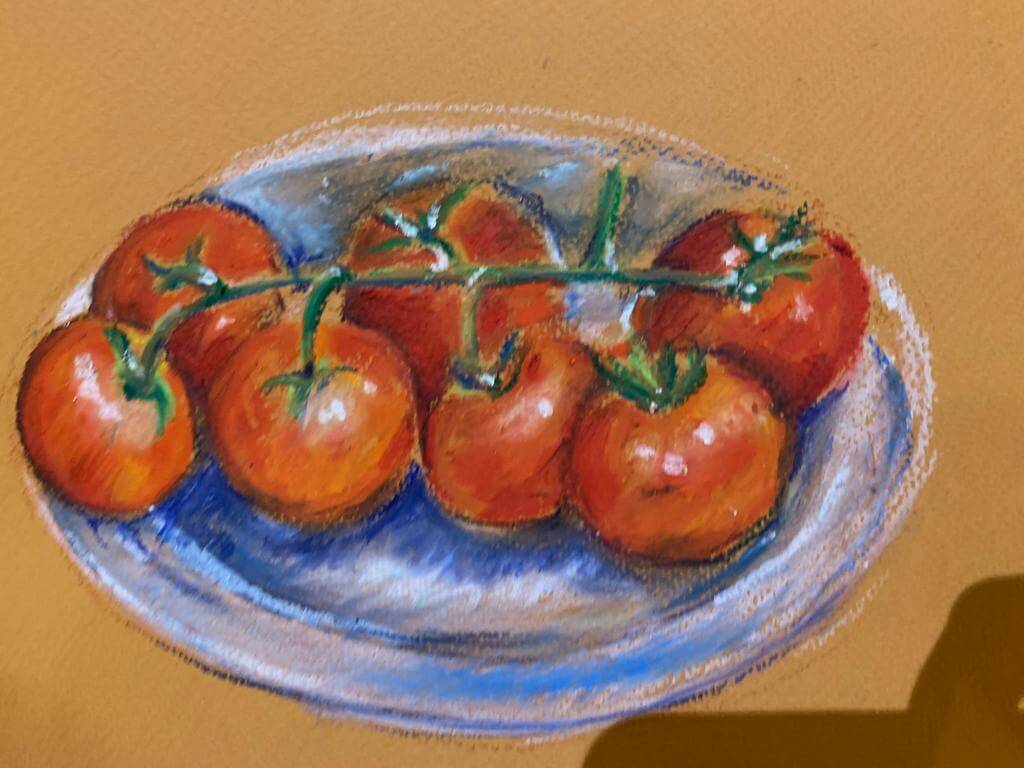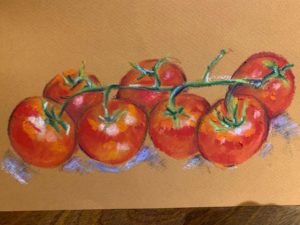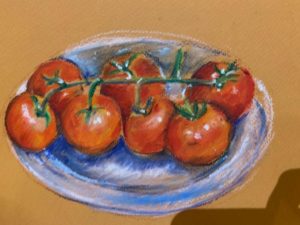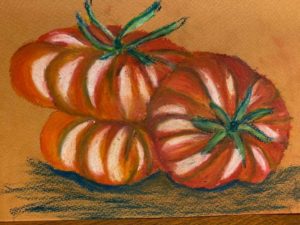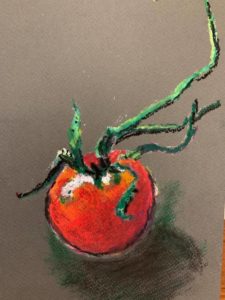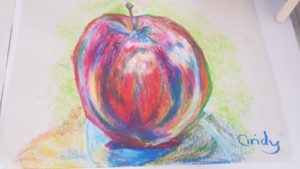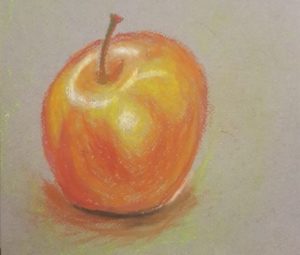Oil Pastels
Oil Pastels look like crayons but are much more than that. They are softer and blend better than crayons or coloured pencils. They make beautiful finished pieces and some artists specialise solely producing these pieces of artwork. Solvents can be added to pastels to allow you paint with them as well . The softness and ease of application depends upon what brand of pastels been used. For example, Sennilier pastels are softer than Craypas pastels but a lot more expensive. We use mostly Craypas expressionalist (student quality) in our classes. Some brands can work well together as well. For instance, I would use the harder pastels for outlines and softer ones to get more coverage. We enjoy getting to experiment with different brands in the classes and students can get a better idea of what they want to buy.
Tomatoes
Tomatoes were used as our subject matter for our art pieces this week. Oil pastels are chunky in nature. Hence we were able to use the side of the pastels to apply the all the different colours you can see in the skin. The edge of the pastels was used to achieve the sharp finishes on the outside of the tomatoes. The use of highlights helped to show the shine on them but we had to be careful applying the pastels that the highlight remained intact!! It was beautiful to see all the striking images of the tomatoes either on the vine or in a single piece.
Apples
The beginners learn all about oil pastels. We showed them the various techniques to apply them to paper. Oil Pastel paper is important to be used so that the pastel can grip onto the paper. Their piece of artwork was to draw an apple (and not eat the apples in front of them!) using the pastels. They added highlights they could see on their apple. Afterwards they applied the different layers of colours to achieve the skin colour. Blending sticks were used to blend the colours and set the shadows under the apples.

We will be creating image of tree tunnels next week. Watch out for Hedge Rows.


